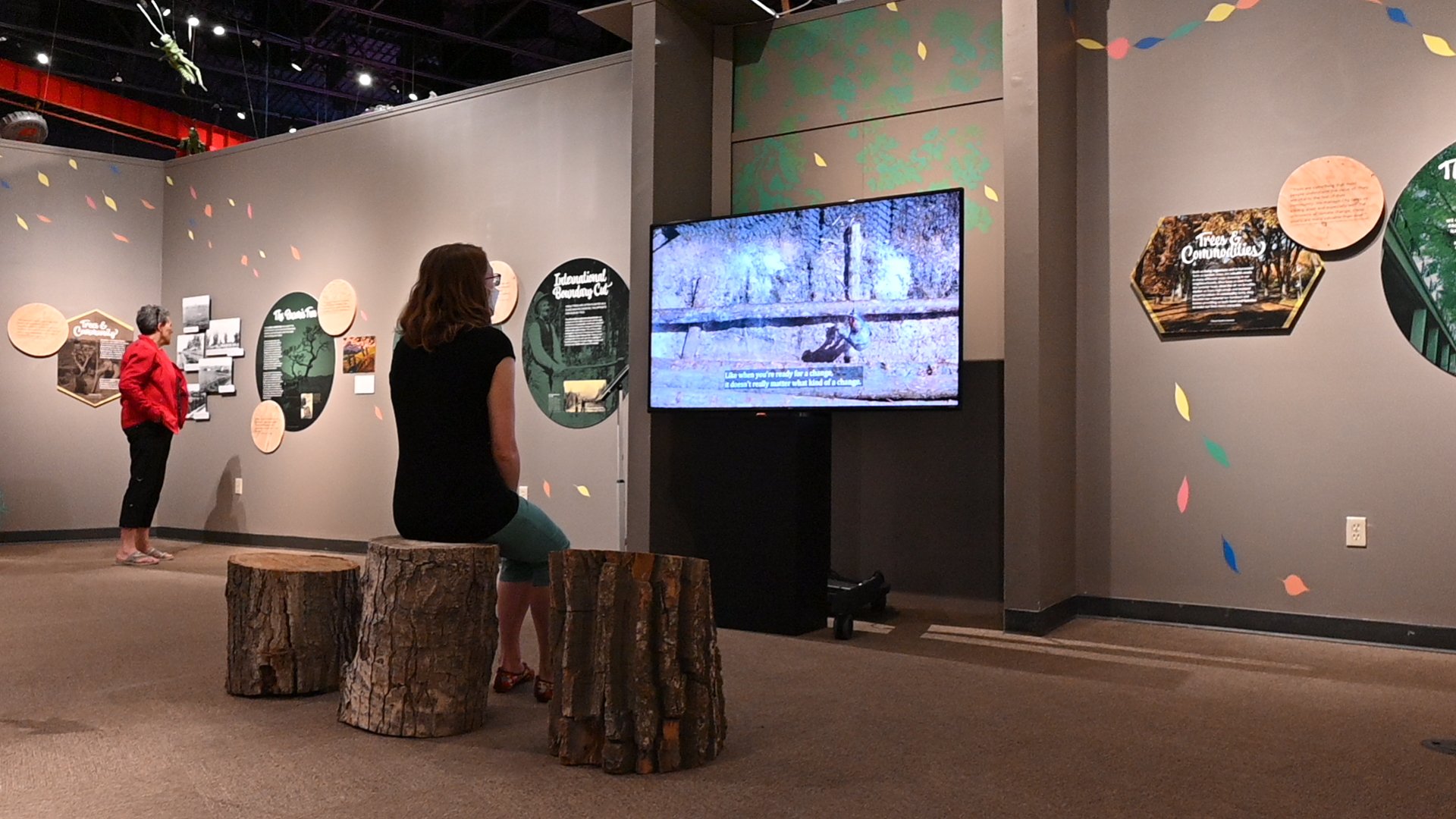How Have Trees Shaped Lethbridge History?
Cottonwoods in the Oldman River Valley.
When we think of local history, trees aren’t necessarily what come to mind. But trees help create a sense of community identity and have brought people together in unique ways.
In Lethbridge we now have a variety of trees that surround us, but prior to settlers arriving in the area, species were few. Cottonwoods were harvested extensively during early colonial settlement, with thousands of riverside trees being felled to build the original Fort Whoop-Up near the confluence of the Oldman River and St. Mary River. With few other trees on the plains, settlers used cottonwoods to build homes and furniture before larger conifers were floated downstream from mountain forests to local sawmills.
Cottonwoods have also been important to Niitsitapi (Blackfoot) peoples for thousands of years, with these large poplars serving as the centre support and frame for the okan (medicine lodge). Not anyone can cut poplars for the okan though—special rights are required. The narrowleaf species of cottonwood also holds a special spiritual significance for Niitsitapi mortuary practices. This shorter species with low crowning branches was frequently used for platform burials prior to the impacts of colonization.
Above the river valley, few trees covered the landscape until the early 1900s. The Experimental Farm for Southern Alberta was established in 1906 on the east side of Lethbridge, now the site of the Lethbridge Research Station. The facility’s original superintendent William H. Fairfield placed significant emphasis on planting trees as part of building the community. The “Fairfield Poplar” is a massive plains cottonwood that still stands on the site today—it was dug up from the river valley and planted over 100 years ago. The hundreds of trees planted in what is now Fairfield Gardens helped locals understand how imported tree species would respond to the southern Alberta climate.
Around the same time Fairfield was planting his trees, “Ol’ Westy” was another plains cottonwood transplanted from the river valley to Lethbridge’s north side. While many other structures have come and gone in that location, Ol’ Westy has remained, standing at the heart of the Westminster neighbourhood. The tree received its official moniker in 1997 when it was protected from removal by a group of committed school children and residents, for whom this tree has always been a special friend.
From our only natural species—the mighty cottonwood—to trees transported and planted by settlers like the ash and elm trees commonly found in local neighbourhoods, the story of trees helps us understand the history of our region. To learn more about the important connection between trees and humans, visit the Galt Museum & Archives latest exhibit, Rooted: How Trees Give Us Life, on now until November 6.



